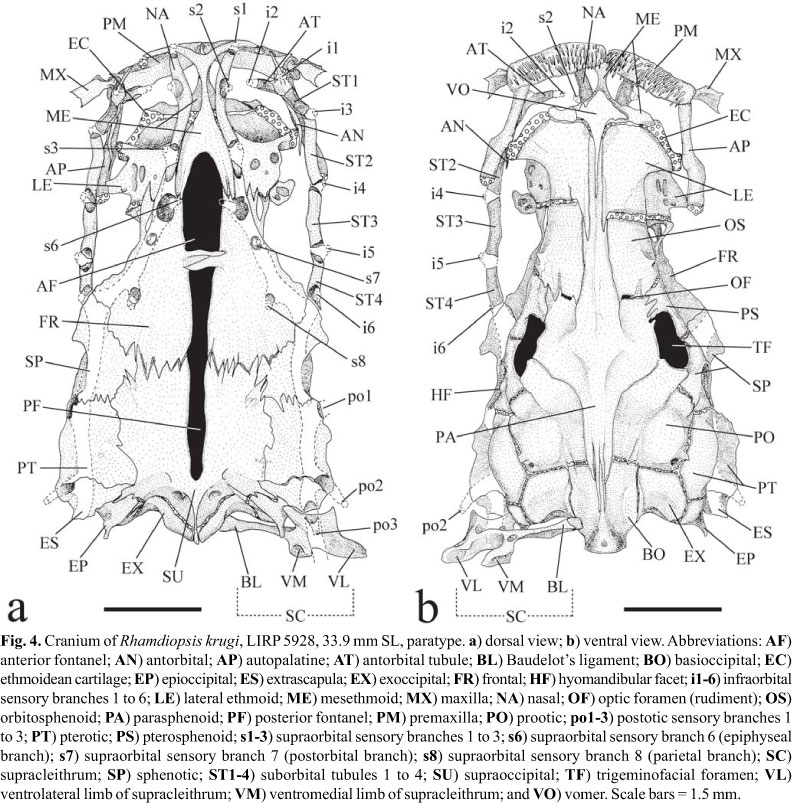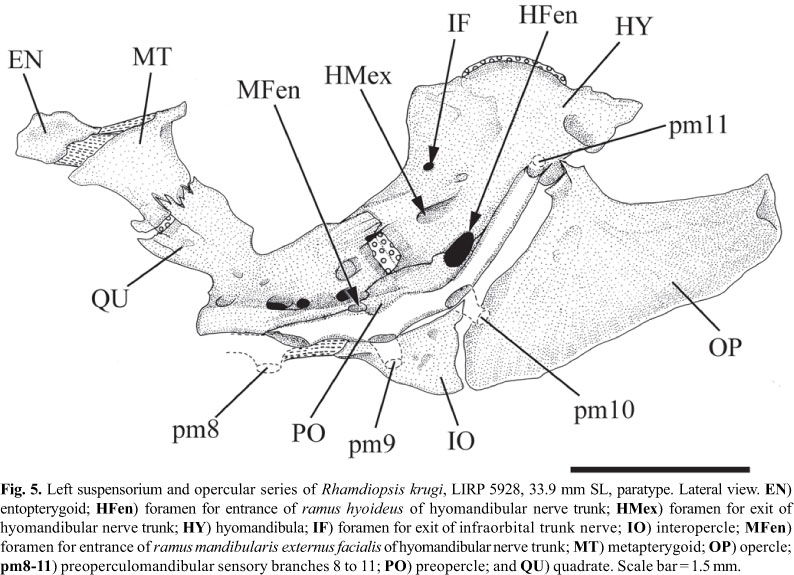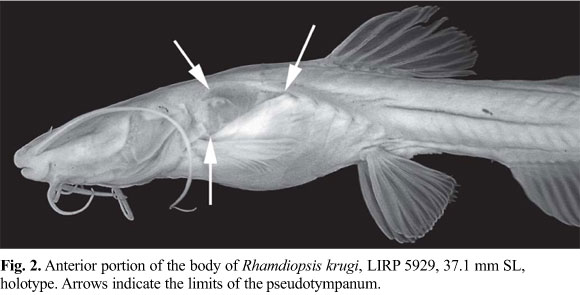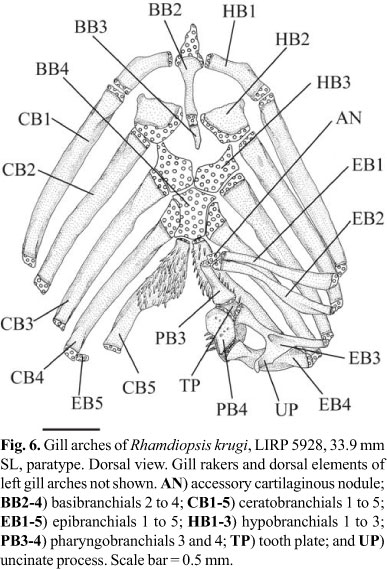Rhamdiopsis krugi, a new troglobitic heptapterid catfish, is described from the caves of Chapada Diamantina, State of Bahia, northeastern Brazil. This species, although frequently cited in the scientific literature along the last seventeen years, remained undescribed largely due to its uncertain phylogenetic affinities. The generic assignment of R. krugi was clouded largely by its high number of unusual morphological features (some related to cave life), for instance: absence of eyes and body pigmentation; presence of a widely exposed pseudotympanum; posterior border of the anterior branch and anterior margin of the arborescent portion of the posterior branch of the transverse process of fourth vertebra joined; dorsal hypural plate commonly with seven rays; ventral caudal plate usually with six rays; dorsal and ventral caudal-fin lobes typically with six branched fin rays each; 38-39 vertebrae; anal fin with 14-17 rays; and lateral line very short. Rhamdiopsis krugi can be easily distinguished from its congeners, R. microcephala and R. moreirai, by its troglomorphic features and by the presence of a shorter lateral line, fewer vertebrae and anal-fin rays, pattern of branching of caudal-fin rays, and several attributes of skeletal system. The affinities of this new species are discussed in light of current phylogenetic knowledge of the family Heptapteridae. Incongruent derived characters do not allow selection of a particular hypothesis of sister group relationships among species of Rhamdiopsis. The occurrence of R. krugi in the rio Paraguaçu basin is possibly due to an event of hydrological capture from a section of the middle portion of the rio São Francisco basin, caused by tectonic events. The semi-arid region where R. krugi presently lives was probably covered by a wide forested area during a humid cycle in Quaternary. A summary of natural history and ecology data of R. krugi, as well as notes on its conservation, are provided. We also offer comments on the morphological plasticity of R. krugi.
Conservation; Morphology; Neotropics; Troglomorphism














